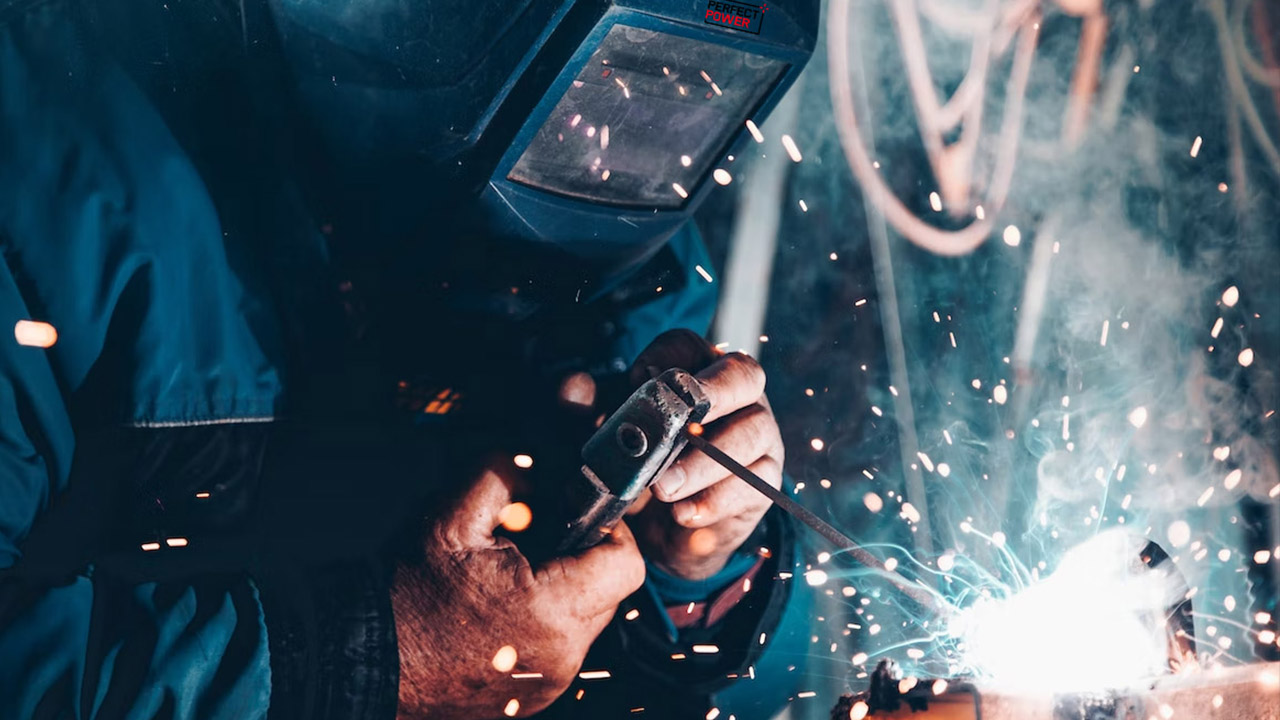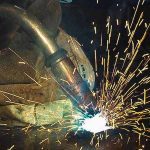There are numerous industrial applications and advantages of stainless steel for metal fabrication projects. Stainless steel is commonly employed in the design of buildings, kitchen appliances, and equipment for the aerospace, automotive, and maritime industries. As a result of its numerous applications, stainless steel is frequently used to make industrial equipment. Because of this, stainless steel welding differs depending on the application. Steel welding also depends on the material’s thickness.
Stainless steel welding differs depending on the application.
021208.com
The combination of other components such as iron, carbon, and chromium with other elements like nickel, niobium, titanium, and molybdenum gives stainless steel its various degrees of material. Different techniques for steel welding are employed with stainless steel, which comes in a variety and is used in many different ways.
Most welders are unaware of this and need to know how to weld stainless steel at home. Today here, you will learn a lot about the various stainless steel welding processes.
5 METHODS FOR WELDING STAINLESS STEEL AT HOME
1. TUNGSTEN INERT GAS/GAS TUNGSTEN ARC WELDING (GTAW/TIG)
Gas tungsten arc welding is the most popular method for joining stainless steel. Known for its high-quality products, adaptability, durability, and ability to give steel a pleasing appearance after welding. In TIG welding, weld at low currents, which reduces heat input and allows for adding filler to any steel gaps; the method is perfect for joining thin materials.
The main purpose of argon gas in Gas tungsten arc welding is shielding, and depending on the project’s requirements, you can combine it with other gases, including helium, hydrogen, and nitrogen. To avoid oxidation and boost corrosion resistance, inert backing gas protection can be made using a single-sided welding technique.
2. PLASMA ARC WELDING (PAW)
The TIG welding procedure is comparable to plasma arc welding. The electrode is inserted inside the rod during PAW by the welder. The apparatus used for plasma arc welding is made up of nozzles. For steel welding that requires deep penetration, the nozzle aids in producing plasma. When square-edged joints up to 8 mm need to be welded, plasma arc welding is employed. For thicker square-edged joints, PAW/TIG is required. Argon is frequently used with hydrogen to retain the material’s corrosion resistance when gas components like argon are present.
Steel welding also depends on the material’s thickness. Read the guide to learn how to weld stainless steel.
021208.com
3. SPOT WELDING OR RESISTANCE WELDING
Because you may use this type of welding process for both big and small tasks, resistance welding is considered versatile. Electric current is used in resistance welding to facilitate welding. Electrical resistance is created when an electric current passes through an electrode and contacts metal. Electric current aids in heating the stainless steel and joining the parts.
Spot welding or resistance welding uses a relatively small voltage while drawing a sizable quantity of current from the power supply. Resistance welding is incredibly simple compared to other procedures because you only need to click a button.
4. SHIELDED METAL ARC WELDING (SMAW)
The oldest and most popular steel welding process is shielded metal arc welding, sometimes called manual metal arc welding. The shielded metal arc welding (SWAM) is also frequently used because it is well-suited to joining various materials.
A consumable electrode creates an arc between the electrode and the welding steel. The electrode melts as current is applied, beginning to fill the spaces between the steel pieces to unite them. The molten welding electrodes is then covered in a flux layer to protect it and stop the steel from oxidizing. On the molten section, the flux creates a layer of gas and slag, which is then scraped from the material.
5. METAL INERT GAS (MIG)/GAS METAL ARC WELDING (GMAW)
This semi-automatic steel welding procedure creates a solid bond between two pieces of steel. You can use manual or mechanical methods to perform the process. An argon-rich shielding gas and a continuously reusable electrode wire are used in MIG welding. To produce better metal quality when performing positional welding and to give a cleaner look, a pulse current supply has been provided for gas metal arc welding (GMAW).
The pulse current supply makes it simple for the welder to weld hard-to-reach areas on stainless steel components. Helium, oxygen, and carbon dioxide are among the gases employed to stabilize the arc, enhancing the strength of steel welding. Make sure to clean stainless steel after welding for a beautiful and shiny appearance.
CONCLUSION
These are the five common methods used for welding stainless steel. You can employ any of the techniques mentioned above based on your convenience and the thickness and intended use of the material. Ensure the filler and steel are made of the same material when using a filler. Remember to clean and prep metal for welding. Additionally, before welding steel, keep dirt off it because stainless steel is highly prone to scratches.











